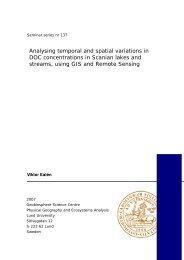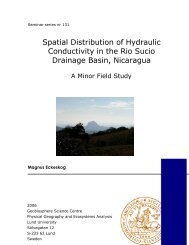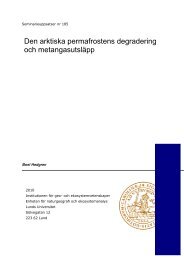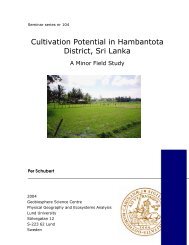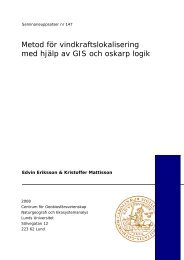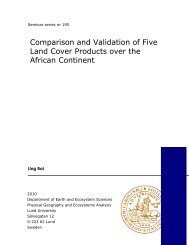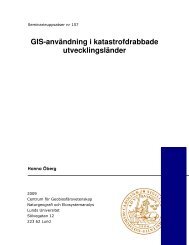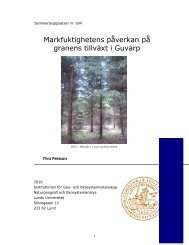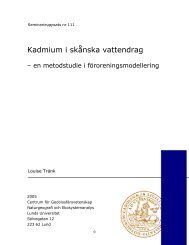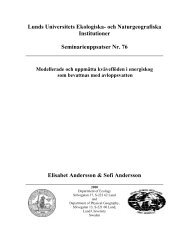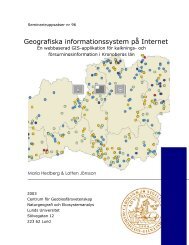Finding Potential Sites for Small-Scale Hydro Power in Uganda: a ...
Finding Potential Sites for Small-Scale Hydro Power in Uganda: a ...
Finding Potential Sites for Small-Scale Hydro Power in Uganda: a ...
Create successful ePaper yourself
Turn your PDF publications into a flip-book with our unique Google optimized e-Paper software.
In the 1960’s <strong>Uganda</strong> was one of the richest countries <strong>in</strong> Africa, with successfulagriculture and a significant ref<strong>in</strong><strong>in</strong>g <strong>in</strong>dustry. The relative prosperity was destroyeddur<strong>in</strong>g the rule of Idi Am<strong>in</strong>, not least because of the banish of the population with Asianbackground, which dom<strong>in</strong>ated the country’s bus<strong>in</strong>ess world. A great contribution to theeconomic recovery was when the banished Asians, <strong>in</strong> 1991, were <strong>in</strong>vited to return andreclaim their property.The driv<strong>in</strong>g <strong>for</strong>ce <strong>in</strong> the development has been the private sector, which was stimulatedby the deregulation of the governmental sector. After 1986 the mean growth rate wasover 5% until 2003 and the <strong>in</strong>dustrial production had a significant growth ofapproximately 14%. The <strong>in</strong>flation decreased from three digit mean levels per year dur<strong>in</strong>gthe 1980’s to 3% per year 1997-2002 (Johannesson, 2003).The agriculture is the dom<strong>in</strong>at<strong>in</strong>g sector with<strong>in</strong> the economy and is equivalent to 40% ofGDP. The <strong>in</strong>dustry is primarily concentrated on ref<strong>in</strong><strong>in</strong>g agricultural products. Largerfactories produce tobacco-products, dr<strong>in</strong>ks and textiles and cloth<strong>in</strong>g. Almost allproduction is made <strong>for</strong> the local market and the <strong>in</strong>dustry is concentrated to Kampala andJ<strong>in</strong>ja by Lake Victoria. The largest natural asset is the fertile soil, but the country has alsolarge deposits of copper. <strong>Uganda</strong> was also <strong>in</strong> the late 90’s Africa’s second largest goldexport<strong>in</strong>g country, although a large portion of this gold had been smuggled <strong>in</strong> fromCongo K<strong>in</strong>shasa. Agricultural products and fish are equal to about 90% of the exportand the sector employs almost 80% of the population. The fertile soil and the favorableclimate <strong>in</strong> southern <strong>Uganda</strong> makes it possible to harvest two times a year under normalprecipitation circumstances and with irrigation three to four times a year. Staple cropsconsist of matoke, cassava, sweet potatoes and corn (www.cia.gov).Firewood and charcoal represents 90% of the total energy consumption <strong>in</strong> the country.The rema<strong>in</strong><strong>in</strong>g 10% are extracted from imported oil or nature gas or as electricity almostexclusively produced at the hydropower station at Owen Falls.<strong>Uganda</strong> is one of the most aids ravaged countries <strong>in</strong> the world, but it is also the firstcountry <strong>in</strong> Africa with a successful aids program. There has been a decrease from 30% ofHIV positive adults <strong>in</strong> 1992 to less than 6% <strong>in</strong> 2003 (Johannesson, 2003).7



